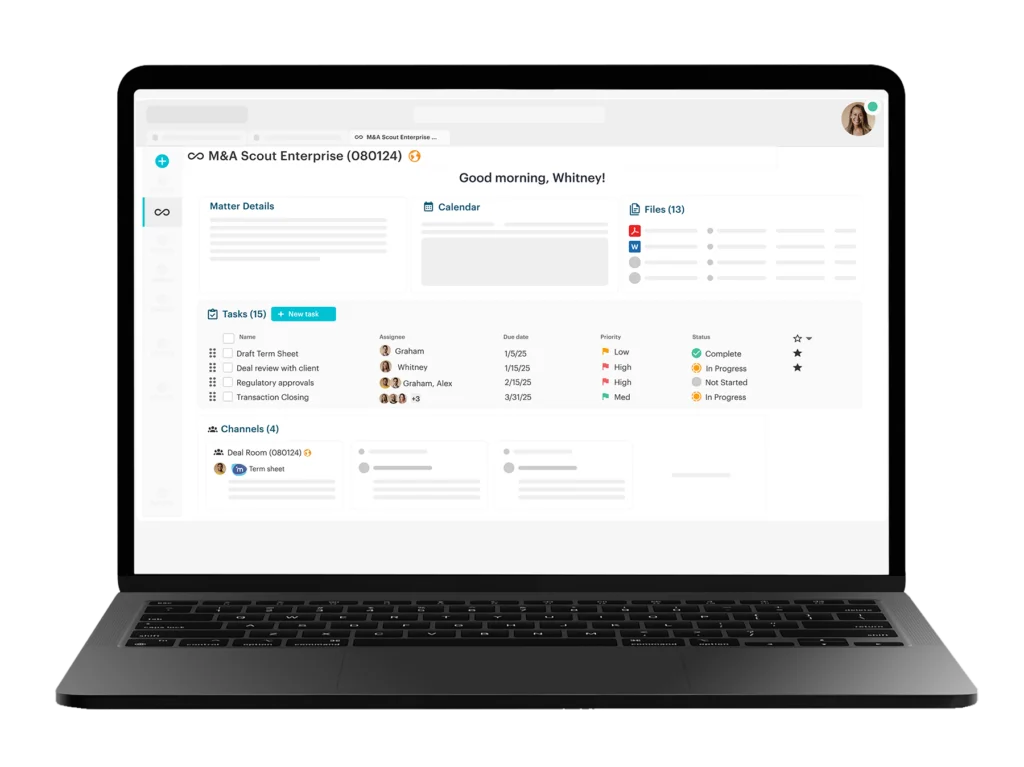The evolution of workplace communication has accelerated, compelling organizations to shift from traditional email exchanges to more secure and efficient collaboration platforms. The transition to platforms like Workstorm signifies a strategic move towards enhancing productivity, streamlining communication, and strengthening data security practices. As the demand for seamless collaboration with external parties grows, the imperative to protect identities, secure data, and implement best practices within these platforms becomes increasingly critical.
In this article, Workstorm offers recommendations for a secure collaboration environment, emphasizing security measures and decision-making strategies to create an organization that is both efficient and protected.
Moving Collaboration from Email into a Secure Collaboration Platform:
Traditional email communication is transitioning into secure collaboration platforms to reduce the risk of phishing and other security breaches. Most organizations experience a significant volume of messages in their inbox and bad actors know that communication and transactions happen via email. As a result, sophisticated spoofing and phishing attacks attempt to gain privileged and confidential information like personally identifiable information (PII) and logins for financial accounts.
Deploying a secure collaboration platform not only helps reduce email volume and increase productivity by providing a centralized location for communication and document sharing, but it can also help reduce risk of exposure.
Workstorm was built to meet the collaboration needs of a highly regulated industry. For instance, it is critical to have a compliant channel which then has the ability to send short form messages, internally or externally. The Securities Exchange Commission (SEC) has continued to issue fines to financial firms that use “off-channel” communications tools to conduct business. In addition to exposure to regulatory fines, if a firm’s teams use consumer tools like Signal, WhatsApp, personal email, or text messages, their risk for a data breach also increases. The solution is to offer a centralized, secure collaboration platform that allows everyone to communicate safely, with both internal and external parties.
Protecting Identity Inside the Collaboration Platform:
Ensuring identity protection within a collaboration platform goes beyond basic user authentication. Advanced security measures like two-factor authentication (2FA) are required to safeguard sensitive information. Passkeys help achieve 2FA in a single step, while making it easy for individuals to securely access their account.
Additionally, with the rise of AI technologies that include voice and facial recognition, it is also essential to reinforce the importance of creating strong passwords and regularly updating them to deter hacking attempts. Earlier this year, Microsoft revealed that hackers gained access to email accounts of some in senior leadership via a password spray attack. Strong security policies should reject the reuse of passwords across multiple applications, which can lead to vulnerabilities, and instead emphasize the need for multifactor authentication to secure user accounts.
When setting up a collaborative workspace, protocols regarding data protection, encryption standards, and access control are vital. Encrypting data at rest and in transit is a baseline security requirement, and determining the level of access granted to platform providers is critical for maintaining data integrity and security. However, not many collaboration platforms available on the market offer clients the ability to control encryption levels. Workstorm enables clients to choose between multi-tenant cloud, private cloud, or on-premises deployment options depending on the level of control and oversight desired over the platform’s data, including the option for end-to-end encryption.
Security Practices on the Platform:
The wisest course of action against security breaches is deterrence. Educating users about security risks and enforcing reliable procedures from the outset can strengthen the organization against such attacks. This includes regular training and communication about how to spot phishing and identify illegitimate and even criminal activity.
Additionally, implementing the principle of least privilege ensures that individuals only have access to information necessary for their roles, reducing the potential impact of data breaches. Using Workstorm, administrators can maintain clear policies for sharing categorized information, limit data retention to essential data, and utilize private channels for sensitive communications to enhance security measures. Workstorm’s security whitepaper outlines its secure collaboration and data protection framework.
Securing Collaborative Workspaces with Workstorm:
Workstorm’s approach to security emphasizes a balance between usability and strong security measures. With features designed to prioritize data protection, streamline collaboration with external parties, and create effective guidelines for secure communication, Workstorm provides a comprehensive solution for organizations looking to enhance their collaborative workflows while upholding stringent security standards. By adopting secure collaboration practices and leveraging the security features offered by Workstorm, organizations can mitigate risks, protect sensitive information, and ensure a productive and secure work environment.


